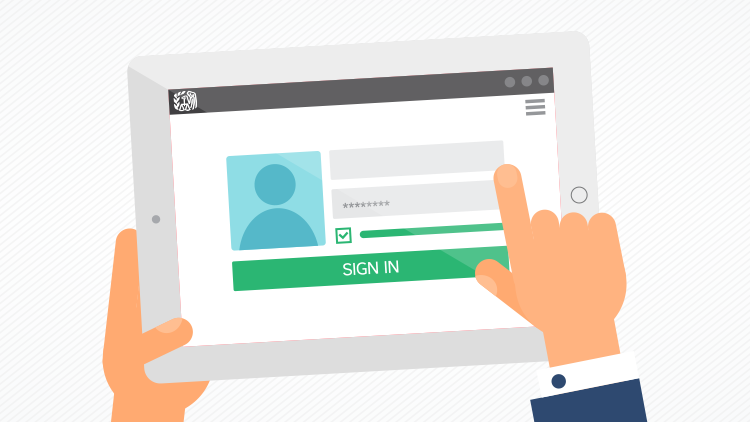by | Jul 21, 2021 | Tax Tips and News
The Internal Revenue Service is continuing to move individual income tax features into the digital age. The agency’s latest move gives taxpayers digital control over who can represent them or view their tax records.
The new feature is one of the recent upgrades to the Online Account for individuals. It allows taxpayers to designate their tax professional of choice to represent them before the IRS with a Power of Attorney (POA) and to view their tax accounts with a Tax Information Authorization (TIA). In addition, tax professionals can now visit the new Tax Pro Account on IRS.gov to initiate POAs and TIAs online, using simplified versions of Forms 2848 and 8821.
“The ability for taxpayers to connect online with their tax professional is a groundbreaking step for the IRS,” said IRS Commissioner Chuck Rettig. “This is the first, basic step toward a more fully integrated digital tax system that will benefit taxpayers, tax professionals and the IRS.”
After it’s been submitted by the tax pro, an authorization request appears in the taxpayer’s Online Account; there, they can review the request, reject it if desired, or approve the request and attach a digital signature.
Because the login procedure puts the taxpayer in a secure environment, they simply need to check a box as their signature and send the authorization request straight to the IRS. A completed digital authorization is checked for accuracy before it goes into the Centralized Authorization File (CAF) database. No manual processing is necessary.
Most of these digital requests can be recorded immediately and show on the list of the taxpayer’s approved authorizations immediately in both the taxpayer’s Online Account and the practitioner’s Tax Pro Account. Some authorizations, however, could take up to 48 hours to process. Once that is complete, the tax pro can use the e-Services Transcript Delivery Service to see the taxpayer’s records.
The main benefits of the new digital authorization process is its speed. By automating this digital process, the IRS can turn its attention to those authorization requests it receives by fax, the mail, or through Submit Forms 2848 and 8821 Online – all of which require humans to process.
Getting started
Taxpayers have only to log in to their Online Account with their IRS username and password. First-time users, however, will be directed to create an account after completing a one-time process to confirm their identity.
If a taxpayer is unable to validate their identity, the Online Account won’t be available to them, so their tax pro would have to use the fax, mail or the online submission options instead. Tax professionals who haven’t logged into the Tax Pro Account before will also have to create an account and verify their identities.
The IRS says there are a few rules of the road to keep in mind with this new online process. At present, the digital authorization process is only for individual taxpayers. For now, businesses or other entities are not supported.
Tax pros have to be in good standing with the IRS and should already have a CAF number before making requests through a Tax Pro Account. The practitioner has to enter their information and that of their clients exactly as it appears on IRS tax records.
These features are only available to those with addresses in the United States. And keep in mind that the Tax Pro Account is a separate tool from e-Services.
From their Online Account, individual taxpayers can see:
- The amount they owe, updated for the current calendar day
- Their balance details by year
- Their payment history and any scheduled or pending payments
- Key information from their most recent tax return
- Payment plan details
- Digital copies of select notices from the IRS
- Their Economic Impact Payments, if any
- Their address on file
Taxpayers can also make a payment online, see payment plan options and request a plan through the Online Payment Agreement, and access their tax records via Get Transcript.
Source: IRS improves services to taxpayers with digital authorizations and launch of new Tax Pro Account
– Story provided by TaxingSubjects.com
by | Jul 20, 2021 | Tax Tips and News
New guidance from the Internal Revenue Service attempts to shine a little light on multiemployer qualified retirement plans that got financial help from the Pension Benefit Guaranty Corporation (PBGC), while explaining what that assistance means for participants and beneficiaries.
The guidance comes by way of Notice 2021-38, which denotes its guidance comes in light of changes driven by the American Rescue Plan of 2021.
The American Rescue Plan, or ARP, made changes in how special financial assistance paid by the PBGC should be treated by eligible multiemployer defined-benefit pension plans that are also at financial risk.
Notice 2021-38 puts forth guidance for these pension plans in three major areas:
- The reinstatement of previously suspended pension benefits, along with make-up payments, as a condition that eligible multiemployer plans must meet if they receive special financial assistance.
- The individual income tax treatment of these make-up payments.
- How a plan that receives special financial assistance must treat the plan’s special financial assistance account for purposes of the minimum funding requirements for multiemployer defined benefit plans
The Notice says it is specifically targeted to qualified pension plans that are required to restart previously suspended benefits as a result of getting special financial help under the Employee Retirement Income Security Act of 1974, (ERISA).
Part of the Notice deals with specific instructions on how plans can use any special financial assistance they may receive:
“Section 432(k)(2)(B) provides that the special financial assistance received by the plan may be used to make benefit payments and pay plan expenses. The special financial assistance must be segregated from other plan assets and invested by the plan in investment-grade bonds (or other investments as permitted by PBGC in regulations or other guidance).”
Eligible plans that receive financial assistance, however, cannot use that assistance to count toward the required level of contributions.
For more information on retirement plans applying for special financial assistance, visit the PBGC website.
Sources: IRS provides guidance for multiemployer retirement plans receiving assistance from the PBGC; Notice 2021-38
– Story provided by TaxingSubjects.com
by | Jul 17, 2021 | Tax Tips and News
After a dismal winter made darker by the COVID-19 pandemic, millions of American families are getting a little sunnier disposition thanks to advance payments of the Child Tax Credit.
Millions of the advance payments are now showing up as electronic deposits in checking accounts and mailed checks in mailboxes.
The Internal Revenue Service and the Treasury Department say the first batch of advance monthly payments was worth some $15 billion and went out to about 35 million families. The vast majority of that—roughly 86 percent—went out as direct deposits.
Advance payments of the Child Tax Credit were made possible by the American Rescue Plan (ARP). Under that new law, each monthly payment is up to $300 per month for each child below the age of 6, and up to $250 for each child age 6 through 17.
The payments will continue each month for the remainder of 2021, so anyone who receives a payment this month will get additional payments each month for the rest of the year unless they unenroll.
Beyond the first July 15 payment, additional payments are expected to go out Aug. 13, Sept. 15, Oct. 15, Nov. 15, and Dec. 15.
The Internal Revenue Service says families should keep a few things in mind when it comes to receiving advance CTC payments:
- Families will see the direct deposit payments in their accounts starting July 15. For those receiving payment by paper check, they should remember it may take longer to receive their payments by mail.
- Payments went to eligible families who filed 2019 or 2020 income tax returns.
- Tax returns processed by June 28 are reflected in these payments. This includes people who don’t typically file a return, but during 2020 successfully registered for Economic Impact Payments using the IRS Non-Filers tool or in 2021 successfully used the Non-Filer Sign-up Tool for Advance CTC, also on IRS.gov.
- Payments are automatic. Aside from filing a tax return, including a simplified return from the Non-Filer Sign-Up tool, families don’t have to do anything if they are eligible to receive monthly payments.
There’s still time for families to sign up for advance payments of the Child Tax Credit.
Those who normally aren’t required to file a tax return should take a look at the tools available on IRS.gov. These tools can help those individuals and families determine their eligibility for the advance credit payments, or to help them file a simple tax return in order to sign up for the payments.
Filing a return is also needed to receive an Economic Impact Payment (EIP) or other credits the family may be qualified to receive.
More information can be found on the IRS’ special Advance Child Tax Credit 2021 page. It has up-to-date information about both the credit and the advance payments.
Source: IRS: Monthly Child Tax Credit payments begin
– Story provided by TaxingSubjects.com
by | Jul 16, 2021 | Tax Tips and News
The IRS is reporting a rise in successful scams targeting tax professionals. This news comes on the heels of a second filing season defined by the pandemic: Preparers and taxpayers again relied on digital communication and file exchange, and legislators passed legislation providing advance payments to qualifying Americans.
“Through June 30, 2021, there have been 222 data theft reports this year from tax professionals to the IRS, outpacing the rate of 211 in 2020 and 124 in 2019,” the IRS says. “Each report can impact hundreds of taxpayers and threaten the tax professional’s business.”
The good news is that the upcoming Security Summit educational outreach campaign includes easy-to-implement security solutions that can prevent preparers from falling victim to data theft. “Boost Security Immunity: Fighting Against Identity Theft” is a five-week series that reflects the new “always online” reality for many tax professionals and taxpayers.
What will the “Boost Security Immunity: Fighting Against Identity Theft” campaign cover?
The IRS says the “Boost Security Immunity: Fighting Against Identity Theft” campaign will address a new topic each week, starting on July 20. Here’s the preview:
- Multi-factor authentication
- Identity Protection PINs (IP PINs)
- Unemployment compensation fraud that targets taxpayers
- Spear phishing scams that target tax professionals
- The signs of identity theft
While the first two weeks cover proactive steps for protecting tax pros’ accounts and taxpayers’ returns, respectively, the final weeks gradually broaden the focus from specific fraud to general tips for spotting scams. The agency says the campaign should help tax professionals “better protect client data from theft and help ensure that the progress in tax-related identity theft that started in 2015 continues on its path.”
Learn more about data security at the IRS Nationwide Tax Forums.
The IRS notes that the 2021 Virtual Nationwide Tax Forums will feature three security-related webinars:
- “Cybersecurity for Tax Professionals – Advanced Session,” presented by the American Coalition for Taxpayer Rights, July 28 at 2 p.m. ET.
- “Helping You and Your Clients Steer Clear of Fraud and Scams,” presented by the Treasury Inspector General for Tax Administration, Aug. 4 at 11 a.m. ET.
- “IRS Criminal Investigation: Deeper Dive into Emerging Cyber Crimes and Crypto Tax Compliance,” Aug. 5 at 11 a.m. ET.
If you’re attending the virtual forums, be sure to check out the Drake Software virtual booth.
Source: IR-2021-152
– Story provided by TaxingSubjects.com
by | Jul 15, 2021 | Tax Tips and News
Every year, the Electronic Tax Administration Advisory Committee (ETAAC) sends a report to Congress that includes recommendations for improving tax administration. This year, the committee’s report followed a second filing season defined by the challenges of a global pandemic. In addition to a renewed call for better IRS funding, many of their recommendations highlight the need for improving the speed, security, and convenience of digital filing.
What is ETAAC?
Created by the IRS Restructuring and Reform Act of 1998, ETAAC is tasked with “[providing continuing public input into the development and implementation of the IRS organizational strategy for electronic tax administration” (“Electronic Tax Administration Advisory Committee (ETAAC)”). It is currently composed of 21 members—ranging from community tax organizations to tax software company representatives.
ETAAC also works closely with the Security Summit when developing recommendations that touch on issues related to data security and IRS Identity Theft Tax Refund Fraud. Since 2015, this cooperation between “the IRS, state tax administrators, and the nation’s tax industry … [has fought] tax-related identity theft and cybercrime.”
What are the ETAAC recommendations?
ETAAC provided Congress with 10 recommendations:
- Provide the IRS with flexible, predictable multi-year funding.
- Accelerate the filing deadline for certain informational returns.
- Modernize the data-sharing statutes among federal agencies.
- The Form 1099 Portal should have functionality that integrates with key stakeholders at the time of rollout.
- Increase the electronic filing goals.
- Enhance the taxpayer experience in the IRS Identity Theft Tax Refund Fraud (IDTTRF) resolution process.
- Allow for greater transparency into return processing status.
- Expand the taxpayer protection tools in the EFIN Toolset.
- Enhance security plan guidance for tax practitioners.
- Accelerate the investment in and timing of digital initiatives.
Many of the recommendations focus on implementing digital solutions to streamline tax administration, improve data security, and improve “the taxpayer experience.” That makes sense given how social distancing and contactless service essentially required electronic platforms for document transfer, meetings, and tax industry conferences. But the linchpin for all other recommendations received top billing: Adequately and predictably fund the IRS.
“Having the opportunity to work on the ETAAC during the pandemic underscored what a fantastic job IRS employees do each and every day—even when they are met with overwhelming circumstances such as late legislation changes, budgetary shortfalls, and technology limitations,” explains ETAAC member and Drake Software Government and Industry Liaison Jared Ballew. “The recommendations in the 2021 report are not only aimed at improving the overall taxpayer experience and securing taxpayer data, but also target areas that can create a better work environment for IRS employees, providing them the tools they both need and deserve to do their job as they work to serve the American taxpayer.”
Interested in learning more about the ETAAC recommendations? Read the 2021 Report to Congress. If you want to know how other tax professionals integrated contactless service in their practice, check out the Drake Software 2021 Contactless Tax Preparation Infographic.
Source: IR-2021-131
– Story provided by TaxingSubjects.com
by | Jul 14, 2021 | Tax Tips and News
The Internal Revenue Service is welcoming the newest member of its Spanish-language features into the clan. The Child Tax Credit Eligibility Assistant that helps families determine if they qualify for the Child Tax Credit and its special advance payments is now available in Spanish.
The Spanish-language version of the tool follows the lead of the original English tool, in that it is interactive and is written to be easy to use. Users simply need to answer a series of questions about themselves and their families to determine if they qualify for the credit.
The IRS says the tool is available to anyone, but it could prove to be especially handy for families who don’t normally file a federal tax return and have not yet filed for 2019 or 2020. These individuals often have little or no income; they may be homeless or be part of other underserved groups.
The Child Tax Credit Eligibility Tool can help them decide whether to continue the sign-up process. From there, they can either choose to register for Child Tax Credit payments using the Non-Filer Sign-up Tool, or to file a regular tax return.
Other multi-lingual help is available
The IRS has come up with materials in several languages to help people understand and receive the benefits offered by the Child Tax Credit. More multi-lingual resources are expected in the coming weeks and months.
Some of the multilingual resources that are currently available include:
- A step-by-step guide to using the Non-Filer Sign-up Tool (Publication 5538) in Spanish, Chinese Simplified, Korean, Vietnamese, Haitian Creole and Russian.
- A basic You Tube video on the Advance Child Tax Credit in Spanish and Chinese, as well as English.
- E-posters in various languages.
These tools and materials – in English and other languages – are posted on a special Advance Child Tax Credit web page at IRS.gov/childtaxcredit2021.
In addition, the IRS has an array of tax-related tools and other resources available in various languages.
The IRS reminds that the Child Tax Credit Eligibility Assistant doesn’t require any personally-identifiable information (PII) for any family member, therefore the results should not be considered an official IRS determination. The results are indeed reliable, but should be considered preliminary if the question are answered accurately.
The IRS does not save or keep the answers supplied by the user or the results generated by the tool.
For more information, visit IRS.gov/childtaxcredit2021, or check out the FAQs on the 2021 Child Tax Credit and Advance Child Tax Credit Payments.
– Story provided by TaxingSubjects.com






